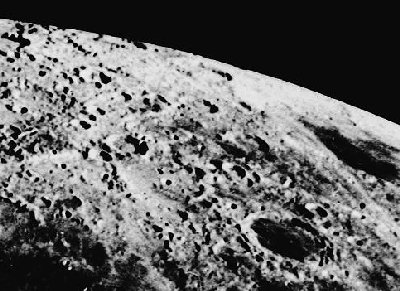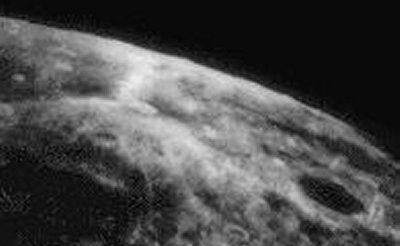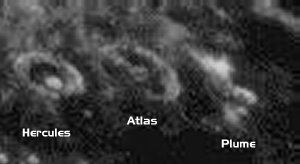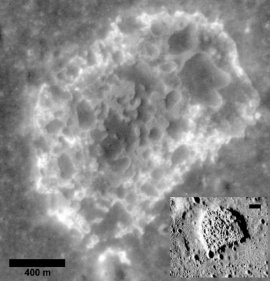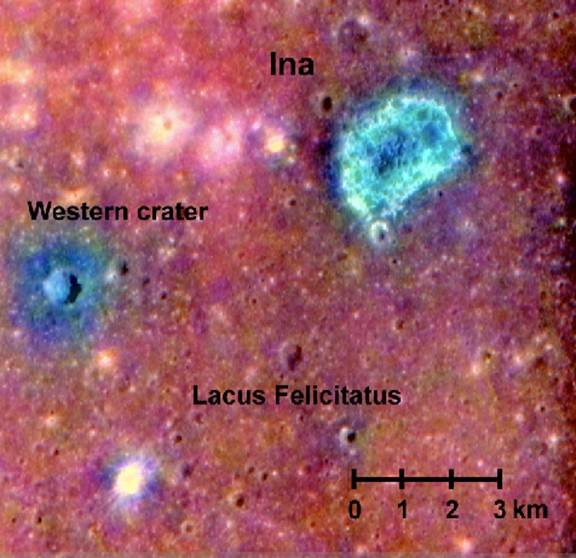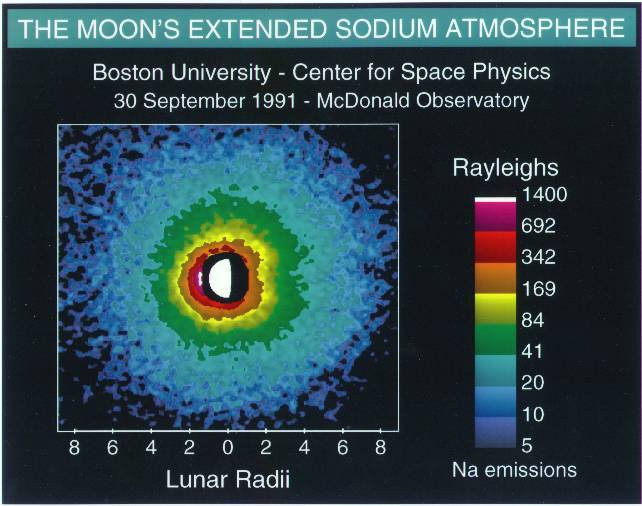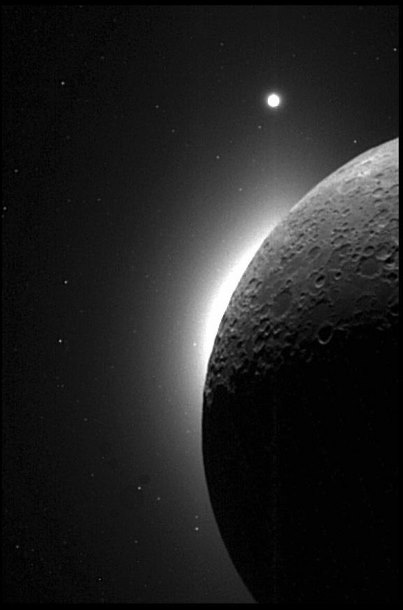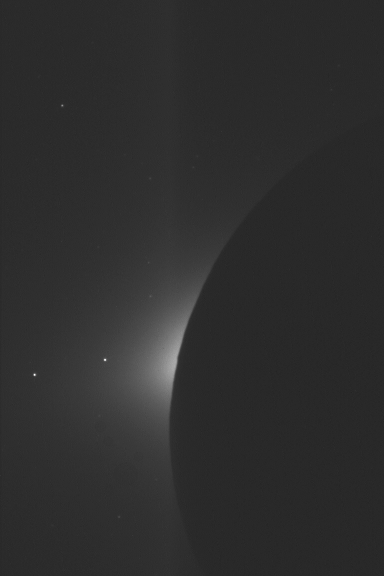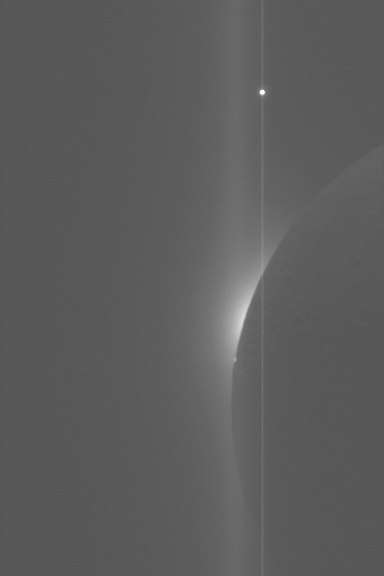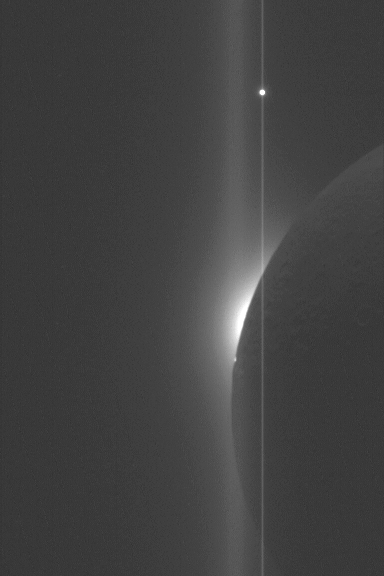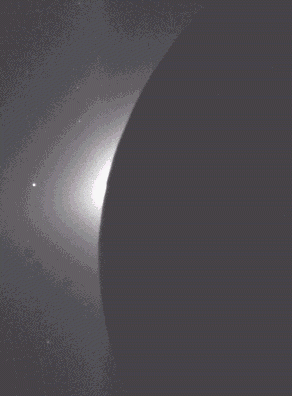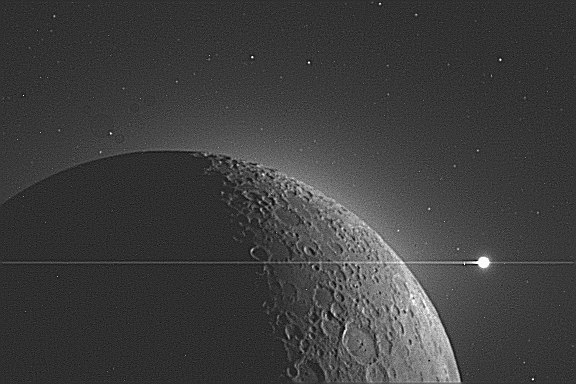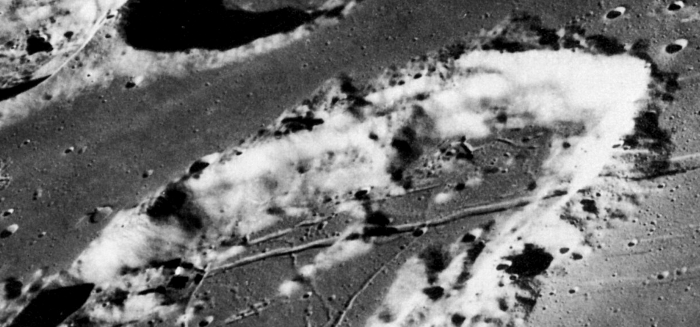|
Lunar Atmosphere |
|||||||
|
In this section we are going to
explore this possibility.
John Lear has often said and maintains the belief
that there is a thin,
but tangeble atmosphere on the Lunar surface that is
possible to breath
for short periods. Though this may be impossible to
prove, or believe for
some, we shall attempt to gather evidence with this
in mind. At the end
it is up to the reader to draw their own
conclusions...
|
|||||||
|
Lunar Atmosphere Data Sheet Diurnal temperature range: >100 K
to <400 K
(roughly -250 F to +250 F)
Estimated Composition (particles per
cubic cm):
Composition of the tenuous lunar atmosphere is poorly known and variable, these are estimates of the upper limits of the nighttime ambient atmosphere composition. Daytime levels were difficult to measure due to heating and outgassing of Apollo surface experiments. So Right from the start we can see that YES there is an atmosphere, albeit tenuous according to NASA's data. |
|||||||
|
Cloud Above the Crater Alphonsus Excerpt For years scientists believed there was no trace of gas or an atmosphere on the moon. Now there is some evidence of an atmosphere, though it may be almost too thin to measure. During an occultation of the Crab nebula, astronomers using a radio telescope at Cambridge University detected a slight bending of the rays of the nebula. This deflection could have been due to a thin lunar atmosphere. In 1956 observers reported what appeared to be a cloud above the crater Alphonsus. In 1958 a Soviet astronomer, Nikolai A. Kozyrev, announced an apparent eruption from the crater. He took spectrograms, which indicated the presence of rarefied gases. His findings caused a revival of debates on the volcanic versus the meteoric origin of moon craters. Many scientists believed that Kozyrev had seen not a true volcanic eruption but a puff of gas and dust from below the surface, probably caused by heat. Some small craters within Alphonsus have “black halos” believed to be deposits of material that have filled the rills along which they are located. Source Encyclopedia Britanica - Article-204895 UPDATE This reference is no longer at that link... Using the Wayback Machine of Archives on that url gets me this... We're sorry, access to http://student.britannica.com/comptons/article-204895/moon has been blocked by the site owner via robots.txt. |
|||||||
|
Lunar Weather Report: 1966 Clear today, no chance of rain or
lightning storms.....
Extreme weather warning... Hurricane
Endymion moving
in...
|
|||||||
|
Atmosphere: Extensive and of High Scientific Interest Excerpt Though the Moon is surrounded by a vacuum higher than is usually created in laboratories on Earth, its atmosphere is extensive and of high scientific interest. During the two-week daytime period, atoms and molecules are ejected by a variety of processes from the lunar surface, ionized by the solar wind, and then driven by electromagnetic effects as a collisionless plasma. The position of the Moon in its orbit determines the behaviour of the atmosphere... In addition to the near-surface gases and the extensive sodium-potassium cloud detected around the Moon (see the section Effects of impacts and volcanism below), a small amount of dust circulates within a few metres of the lunar surface. This is believed to be suspended electrostatically... |
|||||||
|
Plume of Vapor or Dust .
|
|||||||
|
Is the Moon Still Alive? Nasa Science News Nov. 9, 2006: Conventional wisdom says the Moon is dead. Conventional wisdom may be wrong. The site is a strange-looking
geological feature named
"Ina"
in Lacus Felicitatis, a lake of ancient, hardened
lava located at lunar
coordinates 19o N, 5o E. "Ina was first noticed by
Apollo astronauts,"
says Schultz. Pictured below, "it's shaped like a
letter D about two kilometers
wide."
Ina is bright and has odd colors.
Rocks and dirt on
the surface of the Moon grow darker as time passes.
The darkening agent
is space weather: a nonstop rain of cosmic rays,
solar radiation and meteoroids
hit the Moon and darken the ground. (The mechanisms
are too detailed to
discuss here, but the effect is mostly
uncontroversial.) Ina,
however, is bright, as if fresh dirt has been
overturned and newly exposed.
Furthermore, the colors of Ina, measured by a
spectrometer on the Clementine
spacecraft, are similar to the colors of the Moon's
youngest craters. Yet
Ina is not an impact crater.
It all adds up to outgassing: "We believe there has been a rapid release of gasses, blowing off surface deposits and exposing less weathered materials," explains Schultz. This is not necessarily a sign of active volcanism. "The appearance of the surface at Ina does not indicate an explosive release of magma, which would create visible rays of ejecta surrounding a central crater." Instead, the gasses may have been trapped below ground for millions or billions of years and released by, say, a recent moonquake. This interpretation is appealing because Ina is located at the intersection of two linear valleys or rilles -- like many geologically active areas on Earth. "Over the years," he adds, "amateur astronomers have reported puffs or flashes of light coming from the Moon's surface." While many professional astronomers insisted the moon was inactive, the amateur sightings kept open a window of doubt. |
|||||||
|
Transient Phenomena Blasts of gas from deep beneath the lunar surface are giving the Moon a surprisingly fresh-faced look, suggests a new study... While the current study did not search for gas emissions, NASA's recent Lunar Prospector mission did find small amounts of radon and polonium gas on the Moon’s surface. These are thought to accompany larger volumes of other gases, such as carbon dioxide, that are often associated with volcanic activity... If the gas turns out to contain hydrogen, methane or water vapour, she says it could be used for fuel or drinking water on future lunar bases... Excerpt To date, the closest researchers have come to examining intact lunar bedrock was in 1972, when members of NASA's Apollo 17 mission drilled less than 3 metres into the dense soil. The fresh-looking features could provide direct access to the otherwise buried rock layers because the gas is thought to have cleared away between 3 to 5 metres of lunar soil in a depression that already had a thin layer of soil. “Understanding this interface between lunar soil and bedrock will be important for mining and habitation if we ever get to that point,” Taylor says. The findings could also explain mysterious changes in the brightness and colour of patches of the lunar surface that have been observed for centuries. Outgassing could cause some of these so-called "transient lunar phenomena", say the researchers. But they add that falling rocks and debris and impacts from space rocks could also account for some of the observations. Until the bare spots are investigated further, their discovery seems to raise more questions than answers. “It makes us wonder what our nearest neighbour is all about and what other secrets are waiting to be discovered,” Pieters says. |
|||||||
|
Russian Scientist says Planets' Atmospheres are Changing Earth's moon is growing an atmosphere Also, the moon is growing an atmosphere that's made up of a compound Dmitriev refers to as ''Natrium.'' Dmitriev says that, around the moon, there is this 6,000- kilometre- deep layer of Natrium that wasn't there before. And we're having this kind of change in Earth's atmosphere in the upper levels, where HO gas is forming that wasn't there before; it simply did not exist in the quantity that it does now. It's not related to global warming and it's not related to CFCs or fluorocarbon emissions or any of that stuff. It's just showing up. |
|||||||
|
Moon's Extended Sodium Atmosphere .
A new wide-angle coronagraphic-type imaging system used for the lunar eclipse of 16 July 2000 resulted in detections of the lunar sodium exosphere out to 20 lunar radii, approximately twice the size recorded with narrower fields of view during previous eclipses. SOURCE:
Boston
University
|
|||||||
|
The Corona Effect Dust on the Horizon .
See Also NASA pages...
See Also...
|
|||||||
|
Clouds In Crater Apollo Image .
|
|||||||
|
|
|||||||
|
at Above Top Secret Discussion Forum |
|||||||
| Copyright Notice
All clipped images and
enhancements on these
pages are copyright ©2006 Land of Legends. All
text related
to the clips and enhancementsunless otherwise noted
is are copyright ©2006
Land of Legends.
All other pctures and photos on this page, unless otherwise noted, have been gathered from pubic domain sources or are available under GNU License. Further documentation is available on our Copyright Page and our Legal Department. Article Quotes all have links to their appropriate source and are noted. All information quoted or refered to on this page is used only for non profit educational purposes. All reasonable attempts have been made that no credits are missed, but with a work of this size omissions may occur. If you see anything of yours that has not been properly credited or wish to have removed please contact the Webmaster |
